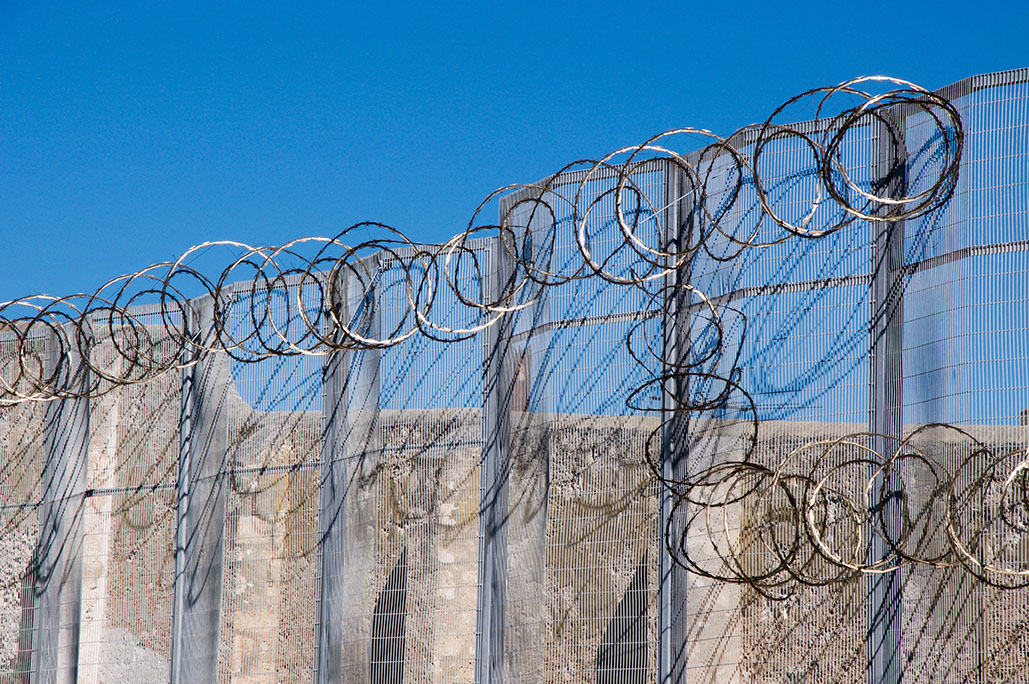
Brennan Center Senior Fellow Lauren-Brooke Eisen visited two private prison facilities in Australia and New Zealand last year to see how their approach could inform better practices in the United States. Research from the trip, funded by the Pulitzer Center on Crisis Reporting, is featured in a new epilogue of Inside Private Prisons: An American Dilemma in the Age of Mass Incarceration. In the epilogue, Eisen reported on how these countries have begun to experiment with contracts that demand better performance, innovation, and recidivism reductions yet she also highlights how some skeptics don't think these prisons go nearly far enough to truly transform outcomes. The book and the epilogue were released this month in paperback by Columbia University Press. Here, Eisen talks more about the trip, what inspired her work on private prisons, and the role that private companies have in corrections in the United States.
What led you to write the book?
For my work at the Brennan Center, I study incentives that perpetuate mass incarceration and influence conditions of confinement. That has included how states apply for different federal grants, and what they do with the money once they get it. For example, some grant programs are structured in a way that intentionally or unintentionally encourages a state to arrest more people, seize more drugs, or convict people of crimes. We've also looked at incentives that drive prosecutor behavior. Prosecutors have traditionally won reelection by touting high conviction rates and "tough-on-crime" tactics. That's slowly starting to change. This work led me to think about how incentives could be used to spur change in the private-prison industry.
And I need to pause here and note that I think the world would be a much more humane and better place if we had far fewer prisons and the people who are incarcerated spent significantly less time behind bars. Our system of punishment is not working and needs to be reimagined. Every day, there are stories of new human rights violations in our prisons: both public and private.
I also do not endorse our reliance on private firms to operate prisons and detention centers. The book focuses on how this industry emerged and gained such a strong foothold in American corrections and detention. The book also asks critical questions about how to ensure private prison operators provide better accountability, transparency, and ultimately outcomes for the people housed behind their bars.
Why did you decide to travel to Australia and New Zealand and study private prisons there? How are they doing things differently than the U.S.?
After writing the book, I was curious to learn more about whether other countries contracted with private prison firms in the same way that we do in the United States. Last July I visited Ravenhall Correctional facility in Australia, and Auckland South Correctional Facility in New Zealand. Both governments have contracted with private companies to run the facilities. The contracts revolve around performance metrics, as opposed to occupancy rates which are the center of so many private prison contracts in the United States.
The companies running the prisons will, for example, receive bonuses from the government if individuals who are incarcerated there do not end up back in prison. And the contracts also include automatic financial penalties for the companies if conditions inside the prison deteriorate, like riots, escapes, and even if the temperature rises too high inside the living quarters.
Both these prisons have strong relationships with partners that help train incarcerated men and place them in jobs once they are released. Many of the men behind bars also cook for themselves and live in residential suites with other incarcerated men.
I was not as familiar with the prison in New Zealand (Auckland South Correctional Facility), but I had read about Ravenhall in a GEO Group annual report and in conversations that I'd had with others in the field. Ravenhall actually opened the month that the book originally came out, so there wasn't any data or research I could really include in the first edition. But I was really intrigued to learn more and visited the facility only a few short months after it opened.
Has either facility that you visited been open long enough now to know if the new structure of the contract is working?
When I was in New Zealand in July 2018, the evaluation of the Auckland facility was not yet complete. There was no information about whether this public-private partnership was more successful than their government prisons in terms of reducing recidivism. But in the time since, the facility, run by a company called Serco, has just received its first payment from the government for successfully reducing recidivism more than the government could.
However, it's still not clear if these prisons will be able to deliver better outcomes than government prisons. Despite receiving this incentive payment for reducing recidivism, the New Zealand chief ombudsman recently released a report about the prison after he inspected it this past summer. He was concerned about the prison's reliance on locking prisoners in cells to manage staff shortages, and found that the facility's record keeping and paperwork relating to use of force incidents needed to be improved. It turns out that an inspector had visited Auckland South Corrections Facility the same month I was there. To me, that report really shows how complex these issues are, that while the private consortium managing this facility was successful in this goal of reducing recidivism for the year it was evaluated, these are not perfect institutions. Recidivism is only one metric.
Ravenhall has only been operational about 18 months. When I was in Australia, I learned that the Victorian Auditor General's Office will likely audit it within the year, perhaps shedding light on more of the prison's operations.
The book highlights new research you conducted in Australia and New Zealand, as well as your extensive reporting on private prisons in the United States, to talk about how we can reimagine contracts with private companies at a local, state, and federal level. Have you seen that starting to happen here?
In the United States there are almost no models for this type of public-private partnership, and we are facing a much different reality than Australia and New Zealand when it comes to our criminal justice system. We have 2.2 million people behind bars in this country. We have almost 50,000 people in immigration detention centers, most of which are privately-run. Our system is so massive that it is difficult to reimagine these types of contracts. While New Zealand is facing historically high numbers of people who are incarcerated, it's still just a little over 10,000 people total. So these are very different systems, and I understand that.
But I think the research is important. We should be aware of other models and how they might be better than what we're doing in the United States. To my knowledge there is no private adult correctional facility that has a contract with a state government to reduce recidivism here. Pennsylvania has been experimenting with contracts for private firms that operate community corrections centers, where individuals go after incarceration to help prepare them for release. The state rebid all of those contracts so they're more focused on performance, and companies can receive an incentive bonus if they reduce recidivism.
You went on the road last year and spoke about the book in cities and towns across the country. What was the reaction from audiences?
I wanted to make people more aware of the vast prison industrial complex that helps sustain high prison populations in this country. Few people knew about the history of how private prison firms emerged, and how they became entrenched so quickly – and with such little oversight – in American corrections and detention. People would also come up to me and say that they didn't know there were private prisons in the U.S. at all. Or they didn't realize that companies were profiting off of incarceration by privatizing some services within a prison, like charging high fees to people behind bars for things like email or video conferencing.
Some people are also surprised to learn that we have outsourced most of the management of immigration detention facilities to the private sector. In fact, nearly three-quarters of immigrant detainees are held in facilities operated by private prison companies.







